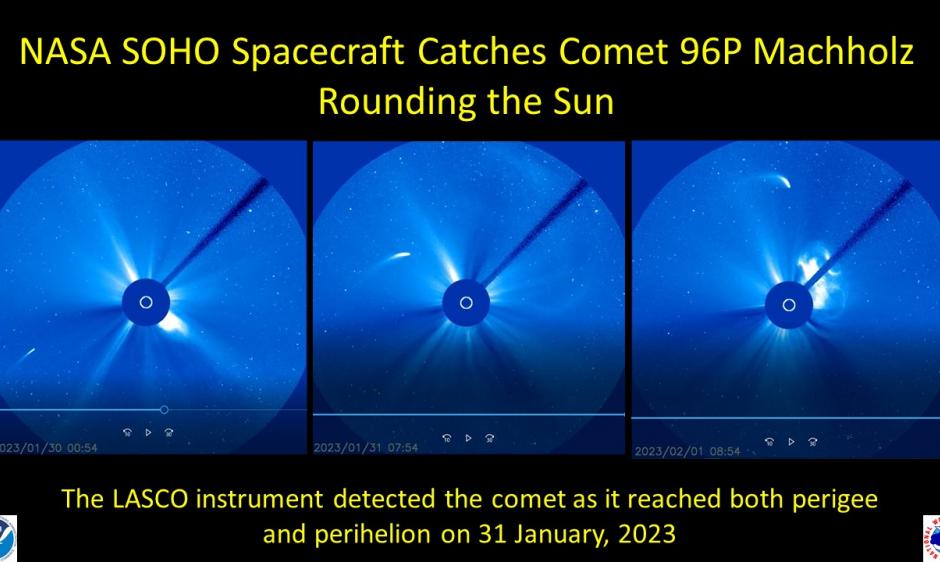
Comet 96P Machholz reached perihelion (closest point to the Sun) on 31 January, 2023. This was also when the comet reached perigee (closest point to Earth). Interestingly, while Comet c/2022 E3 (ZTF) is up in the northern night sky at night and heading back out into space in one direction, Comet 96P Machholz came in from the opposite direction and has just completed it’s orbital turn between the Sun and the Earth. So, while comet viewers on Earth are looking to the night sky at one comet, the NASA/SOHO is observing another comet! These images from the NASA/SOHO LASCO instrument reveal the comet coming in and reaching its orbital turning point – and the changes to the comet’s tail from the solar wind as it reaches perihelion and begins its orbital turn can be seen.